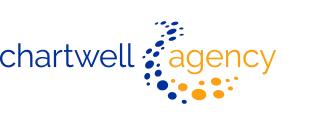Trade Shows! Have a Plan.
Trade shows present an invaluable opportunity. Whether reconnecting with past and current customers or meeting new prospects and generating leads, there’s no denying their importance. Determining whether your experience will be a dream or a dud lies in crafting a cohesive plan that begins way before you ever set foot on the exhibit floor.
In my previous blog, “Creating an effective trade show presence,” I shared how to design a visually appealing booth and develop impactful content relevant to projecting a strong brand to a trade show success. Now, the focus shifts to building excitement and driving traffic to your booth. After all, what good is a kickass booth if no one takes the time to stop and see what you have to offer?
First, the cold, hard truth. No matter how amazing your booth, you’re going to need a plan to ensure attendees won’t just pass you by. Most trade shows take place in enormous venues with a massive number of vendors. All those sights, sounds—and yes, smells—make it easy for attendees to get overwhelmed. Most don’t have the time or the inclination to visit each and every booth, so you must give them a good reason to make it their mission to come to yours.
Making a connection with attendees begins with building an understanding of who’s going to be there. Is the show industry-specific? What is the typical audience of a trade show geared toward that industry? If you spend the day talking marketing-speak to an endless stream of tech folks or discussing the challenges of CPG marketing when the show is exclusively B2B, it won’t take them long to realize you haven’t a clue – or simply didn’t care enough to do your homework.
Most show organizers make their list of pre-registered attendees available to exhibitors, so take advantage of that information to identify prospects and learn about their industry’s pain points. This will enable you to tailor your pre-show communications appropriately, demonstrate knowledge of their challenges, and invite them to visit your booth to learn how your product or service is the solution to what ails them. Be careful not to invite too many people unless you are certain to have enough staff on hand to engage with them. If they’re left waiting to speak with you, they’re not going to feel very enthusiastic about building a relationship.
It’s crucial to recognize that not everyone on that list is going to be a viable prospect, so set realistic objectives. While it may be tempting to boast, “We’re going to walk away with 50 leads,” that may not be feasible – or even desirable. What good are 50 lackluster leads when all you need is one or two or five fantastic ones? Target your communications to those attendees whose business objectives align with your company’s goals. Do so in a unique and compelling way that sets you apart from the competition.
Some recipients of your pre-show communications are likely to respond almost immediately, expressing excitement about coming to see you. Others may follow through on some sort of call-to-action. What do you do about the people who haven’t responded in any fashion? Perhaps a different sort of communication would be more effective. Maybe you should just nix them off the list. After all, you don’t want to alienate a potential future prospect by burying them in unwelcome communications. This is where you need to have a clear roadmap to guide you on next steps
Granted, you can’t rely solely on pre-show communication to convince people it will be worth their while to visit your booth. In the exhibit hall, use incentives and activities to create a buzz and have attendees asking each other, “Have you been to so-and-so’s booth?” That doesn’t mean you have to do something outlandish. You know what best reflects your company and the image it wants to project. A fun incentive could be anything from enhanced visuals and useful swag to free massages and tasty snacks. Just be sure what you choose is relevant to your audience. If there’s some connection to their industry, all the better!
As the show comes to a close, the last attendee makes their exit, and the displays are neatly packed away, it’s important to remember your work has just begun. A post-show plan laying out next steps is necessary to ensure you have the bandwidth and resources to facilitate follow-up communications with the prospects you met at the show. Even if a lead doesn’t immediately materialize into a customer, your goal should be to stay in front of that prospect and cultivate the relationship.
At Chartwell Agency, we’re here to help you chart the path to trade show success. We’d love to learn more about your goals and discuss how we can work together to identify relevant events, create enticing pre-show communications, and map out an effective strategy for engaging with prospective customers both at the show and in the weeks and months that follow.









